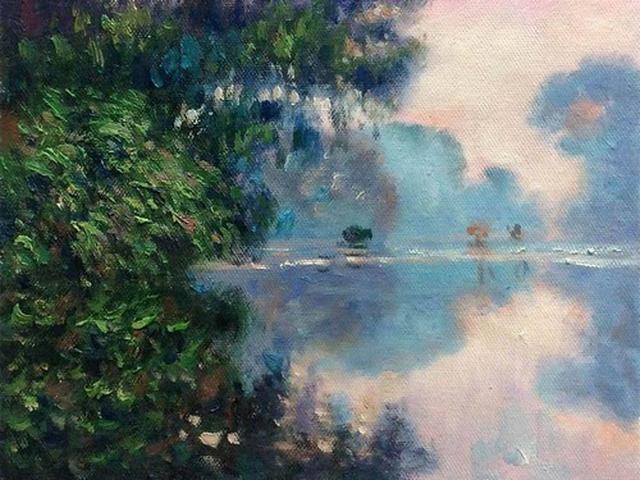Morning on the Seine near Giverny

Monet traveled to the north of Norway and south of Venice to search for different motifs, but he always returned to the places he knew best. He painted the River Seine in Paris, Argenteuil, Vétheuil, and where it flowed into the English Channel. He turned to him in 1896 and 1897 for his series of canvases showing what the sunrise looked like. This painting by Monet was one of 17 canvases that Monet also created on the same themes.
This oil painting depicts a scene of the Seine River near Giverny, which is Monet's hometown. Monet's painting depicts the early morning scene. The feeling of the early hours of the day comes from the color used, the blue and purple palette, the use of daylight, the reflections of the trees and water when the sun rises. Monet began work on Morning on the Seine near Giverny in 1896, but the canvas was not completed until 1897. Due to inclement weather, he had to wait patiently and search for the perfect view along the river. Monet then turned his boat into a floating studio which he used to paint the scene and shows how much perfection he wanted in his work. Monet first painted many changing light effects when the sun rises in the morning and then lined up all the paintings in his studio to study the color and light and then completed them as a series.
Claude Monet was the driving force behind French Impressionism, specializing in air painting, a technique exemplified in this work, which also illustrates most of the characteristics of Impressionist painting of the time. Other Impressionists who dedicated themselves to plein air work were Camille Pissarro (1830-1903), Alfred Sisley (1839-1899) and, to a lesser extent, Auguste Renoir (1841-1919). In 1883, Monet settled in Giverny, where he created his famous water garden, and continued painting water lilies (see Decoration des Nympheas 1916-26, Musée de l'Orangerie, Paris) until his death, anticipating later 20th-century styles such as Abstract Expressionism (1945-1960).
© Tourblink